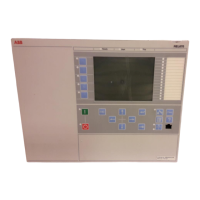Table 20: Test points for phase-to-earth loop of quadrilateral characteristic for compensated/
high impedance earthed systems
Test point R X Comment
P1 0
X1Start
/2
P2 (
X1Start
/2 /
tan(
LineAng
))
X1Start
/2
P3
RFPEStart
/2 0.8 ∗
X1Start
/2
P4 0.8 ∗
RFPEStart
/2 0.8 ∗
RFPEStart
/2 ∗
tan(
ArgLd
)
If 2I0 <
I0MinOp
P5
RLd
/2 0 If 2I0 <
I0MinOp
P6
RFPEStart
/2 0 If
OpLoadEnch
= Off
or 2I0 >
I0MinOp
P7 0 -
X1Start
/2
P8 -(
X1Start
/2 /
tan(
LineAng
))
-
X1Start
/2
P9 -
RFPEStart
/2 -0.8 ∗
X1Start
/2
P10 -0.8 ∗
RFPEStart
/2 -0.8 ∗
RFPEStart
/2 ∗
tan(
ArgLd
)
If 2I0 <
I0MinOp
P11 -
RLd
/2 0 If 2I0 <
I0MinOp
P12 -
RFPEStart
/2 0 If
OpLoadEnch
= Off
or 2I0 >
I0MinOp
P13 0.8 ∗
RFPEStart
/2 -0.8 ∗
RFPEStart
/2 ∗
tan(
ArgLd
)
If 2I0 <
I0MinOp
P14
RFPEStart
/2 -0.8 ∗
X1Start
/2
P15 -0.8 ∗
RFPEStart
/2 0.8 ∗
RFPEStart
/2 ∗
tan(
ArgLd
)
If 2I0 <
I0MinOp
P16 -
RFPEStart
/2 0.8 ∗
X1Start
/2
1. Change the magnitude and angle of phase-to-earth voltage in phase L1 to
achieve impedances at test points P1, P2, …, P16. At the same time, inject
voltage magnitude of 0.0 V and current of 0.0 A in phase L2.
2. For each test point, observe that the output signals STELEMST and
STNDZL1 are activated.
3. Repeat the above test by injecting phase-to-earth voltage in phase L2 in
accordance with test points and steps described above and observe that the
output signals STELEMST and STNDZL2 are activated.
Testing the residual overcurrent start
GUID-500B662C-8018-4394-97FA-B0BA9DE386BD v1
Inject currents in both the phases so that the residual current (2I0) is measured and
if it exceeds KI0Stab times maximum current measured in both the phases and also
make sure that the residual current exceeds I0MinOp value, the outputs
STELEMST and STIE are get activated.
Section 10 1MRK 506 377-UEN C
Testing functionality by secondary injection
92 Railway application RER670 2.2 IEC
Commissioning manual

